Did you know replacing just your toilets, faucets, and showerheads with water-saving plumbing fixtures can reduce your water use by as much as 30% overnight ? Whether you’re concerned about ever-rising water bills or simply want to conserve water for a greener home, the latest plumbing fixtures offer immediate, measurable savings. With innovative technologies and Watersense labels to guide your way, upgrading your home can be both simple and rewarding. Let’s explore how these efficient options make a difference you’ll feel in your wallet and your water consumption.
Save Water Instantly: Surprising Facts About Water-Saving Plumbing Fixtures
Water-saving plumbing fixtures aren’t just for eco-enthusiasts—they’re for anyone looking to cut bills fast and conserve water without sacrificing comfort. According to the United States EPA WaterSense program, simple fixture upgrades can lead to massive reductions in water usage and a direct drop in your water bill . In the bathroom alone, swapping out an old toilet for a low-flow model and installing aerated faucets and showerheads can save thousands of gallons of water each year. For example, traditional plumbing fixtures might use up to six gallons per flush or four gallons per minute, whereas water-efficient alternatives slash those numbers in half or more.
Modern plumbing fixtures make it easy to save water in the kitchen, bathroom, and laundry room. These devices often incorporate features like aerators, pressure regulators, and smart sensors that optimize flow rate without impacting performance. By choosing fixtures labeled with the Watersense label or rated for ultra-low gallons per flush, homeowners can significantly reduce water consumption. The net result is not only a smaller environmental footprint but also a lower monthly utility bill .

"Households can reduce water use by up to 30% simply by updating old plumbing fixtures to water-saving models." — EPA WaterSense
How water-saving plumbing fixtures quickly lower water bills
Key features of the best modern plumbing fixtures
Benefits of Watersense labeled plumbing fixtures for long-term water efficiency
Comparing flow rates and water efficiency across popular options
Actionable steps to upgrade your plumbing fixtures and conserve water
How Do Water-Saving Plumbing Fixtures Work? Understanding the Core Concepts
What Is a Water-Saving Plumbing Fixture and Why Does It Matter?
A water-saving plumbing fixture is any fixture—like toilets, showerheads, or faucets—that uses advanced technologies or optimized designs to substantially reduce water usage compared to standard models. This not only helps to conserve water in the home but also lowers your water bill and lessens the strain on local water supplies. But why does this matter? Water scarcity is a growing challenge globally and locally; each gallon saved translates to significant resource conservation over time.
These fixtures matter because they maintain high performance while minimizing water flow, thanks to features like aeration, optimized flushing mechanisms, and pressure regulation. By cutting water use at every turn, your home becomes more efficient and environmentally responsible. Moreover, switching to these fixtures is one of the easiest ways to save water and money while directly contributing to broader sustainability goals.

Top Technologies Driving Water Efficiency in Plumbing Fixtures
Recent innovations have driven incredible advances in water-saving plumbing fixtures . Features like dual-flush toilets allow homeowners to choose between a full flush and a reduced flush, cutting gallons per flush dramatically. Faucets and showerheads with built-in aerators blend air with water, providing optimal pressure while using significantly less water per minute. Some fixtures come with motion sensors or timed shut-offs to eliminate accidental water waste.
Additional improvements, such as ceramic-disc valve technology in faucets and pressure-compensating flow restrictors in showerheads, ensure a consistent flow rate regardless of changes in water pressure. With these modern technologies, plumbing fixtures are engineered not just for function, but for maximum water and energy efficiency , seamlessly fitting into any home looking to conserve water and minimize monthly expenses.
The Essential Guide to WaterSense Labeled Plumbing Fixtures
Identifying Watersense Labels: What to Look For in Modern Plumbing Fixtures
Finding true water-saving plumbing fixtures starts with locating the Watersense label. This mark—endorsed by the EPA—is reserved for fixtures that meet stringent water efficiency and performance criteria. When out shopping or browsing online catalogs, look for the distinctive blue and green Watersense emblem, usually visible near the base, handle, or packaging of the fixture.
By choosing Watersense labeled products, you’re assured that the plumbing fixture has undergone rigorous third-party testing to meet EPA standards for both water efficiency and performance. Whether it’s a low-flow faucet, an efficient toilet, or a smart showerhead, the Watersense label is your key to reliable water savings . Make sure to double-check the label, as it’s a recognized standard across the United States for efficient fixture performance.
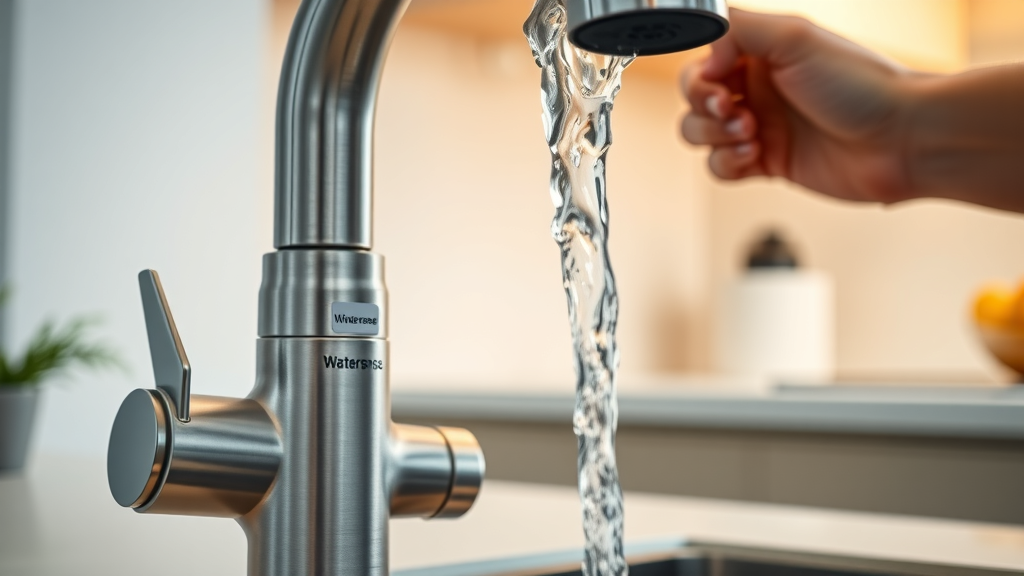
How Watersense Labeled Plumbing Fixtures Ensure Peak Water Efficiency
The Watersense label guarantees that each fixture has passed specific requirements for flow rate, gallons per flush, and overall water consumption. For example, a Watersense toilet must use no more than 1.28 gallons per flush while maintaining strong flush performance. Faucets with the label cap water delivery at just 1.5 gallons per minute, while showerheads must stay below 2.0 GPM (gallons per minute), all without sacrificing user experience.
This rigorous certification ensures that Watersense labeled plumbing fixtures are not just water-efficient, but also fully functional and reliable. By adopting these standards, households can reduce water consumption without resorting to inconvenient or impractical habits. Every efficient fixture makes a measurable impact—boosting savings and sustainability every time you turn on the tap or flush.
Comparing Water-Saving Plumbing Fixtures: Key Metrics for Every Home
Not all water-saving plumbing fixtures are created equal, and understanding the numbers behind each product is crucial for maximizing results. Key metrics include flow rate (measured in gallons per minute or GPM) and gallons per flush (GPF). Standard toilets, for example, typically use 1.6 GPF, but ultra-efficient models push this down to just 1.28 GPF. Your faucet or showerhead, which might be operating at 2.2-2.5 GPM, can be replaced with variants that offer as low as 1.5 or even 1.25 GPM.
Comparing these values side by side helps you identify which plumbing fixtures deliver the biggest water and cost savings. Always cross-reference flow rates when making purchases, and prioritize fixtures that are Watersense labeled. These metrics, easily found on packaging or the manufacturer’s official website, are the fastest way to guarantee smart decisions for your home’s water efficiency and your ongoing utility bills.
Fixture Type |
Standard Flow Rate |
Water-Saving Flow Rate |
Gallons Per Flush |
Watersense Labeled? |
|---|---|---|---|---|
Low-Flow Toilet |
1.6 GPF |
1.28 GPF |
1.28 |
Yes |
Aerated Faucet |
2.2 GPM |
1.5 GPM |
- |
Yes |
Efficient Showerhead |
2.5 GPM |
2.0 GPM |
- |
Yes |
Smart Water Heater |
N/A |
N/A |
N/A |
Optional |
Choosing Plumbing Fixtures to Conserve Water: A Step-by-Step Selection Guide
Evaluating Flow Rate and Water Efficiency in Every Plumbing Fixture
When you’re ready to start saving, the first step is to evaluate the flow rate and potential water efficiency of each plumbing fixture. Look specifically for the “gallons per flush” or “gallons per minute” ratings—these are your benchmarks for water conservation. A lower GPM or GPF means less water is used with every operation, helping you conserve water and slash the amount of water wasted daily.
This evaluation should include all fixtures throughout your home, but focus initially on those that see frequent use. Carefully read the details on the fixture or consult the manufacturer’s or EPA’s Watersense program official website to ensure your choices meet EPA standards . The combination of a low flow rate and Watersense label is the gold standard for maximizing water efficiency.
Prioritizing High-Impact Upgrades: Toilets, Faucets, and Showerheads
Start your water- and money-saving journey by targeting high-impact upgrades: toilets, faucets, and showerheads. Toilets account for nearly 30% of a home’s indoor water use, so swapping out an old model for a Watersense labeled version quickly reduces gallons per flush and makes an immediate dent in your bill. Faucets and showerheads are also daily necessities—choose models with built-in aeration or smart limits on gallons per minute to further conserve water.
Prioritizing these upgrades ensures that your investment has the greatest impact on both water and energy efficiency. You’ll notice bill reductions with minimal disruption to your routine. Plus, these upgrades can often increase property value and appeal, making efficient plumbing fixtures a win for both your wallet and your long-term home comfort.

Smart Water-Saving Devices: The Latest Innovations Beyond Basic Plumbing Fixtures
Integrating Advanced Water-Saving Technologies With Your Plumbing Fixtures
Beyond standard plumbing fixtures, today’s smartest homes leverage high-tech devices to further reduce water usage and prevent waste. Smart leak detectors, for example, catch small drips and pipe bursts before they escalate into costly repairs and significant waste. Some even connect to your phone, sending instant alerts for proactive management. Water flow controllers can be attached to older fixtures for immediate efficiency gains, and programmable irrigation systems help tailor outdoor watering precisely to your landscaping needs.
Integrating these advanced devices with water-saving plumbing fixtures creates an ecosystem of efficiency throughout your home. When combined with efficient fixtures, technologies like flow sensors, smart thermostats, or programmable water heaters allow for deeper control over both water and energy consumption—literally putting sustainability at your fingertips.
Water Heaters, Leak Sensors, and Flow Control Attachments: What’s Worth the Investment?
Efficient water heaters play a crucial role in your home’s overall water and energy consumption. Opting for tankless models or those with high insulation ratings can deliver hot water faster while minimizing standby losses. Consider flow control attachments for your existing plumbing fixtures—these restrict the flow rate, ensuring you only use what’s needed. Additionally, water leak sensors safeguard your home by catching leaks early, drastically reducing the risk of major water loss or appliance damage.
When weighing investments, remember that devices offering layered benefits—such as leak protection, remote water flow monitoring, or instant hot water delivery—are typically worth the cost, paying dividends in savings while preventing potentially expensive repairs.
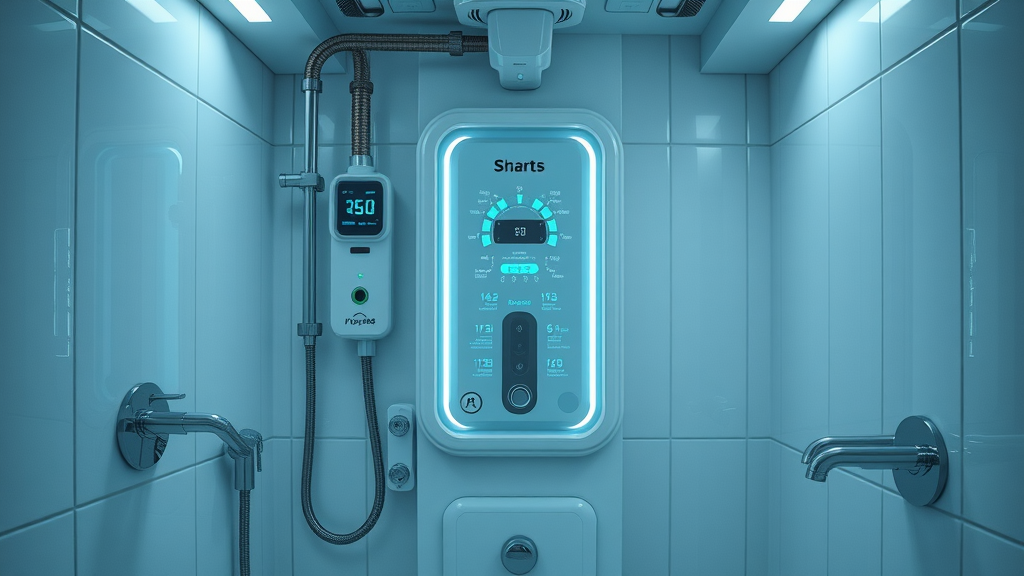
Real-World Results: How Much Can You Save With Water-Saving Plumbing Fixtures?
The financial benefits of installing water-saving plumbing fixtures are substantial and immediate. Many homeowners report a reduction in their water bills by 20-30% within the first billing cycle after upgrade, depending on their household size and previous fixture efficiency. In real terms, the Alliance for Water Efficiency estimates an annual savings of up to $400, making your investment in water-efficient fixtures not just environmentally wise, but economically smart as well.
These savings compound year after year, especially when all major fixtures are addressed in tandem. By reducing your household’s gallons per flush and gallons per minute across the board, you keep monthly expenses consistently lower, all while doing your part to conserve water—a crucial resource in many regions.
"Switching to water-saving plumbing fixtures can save a family up to $400 annually on utility bills." — Alliance for Water Efficiency
People Also Ask
What type of fixtures use the least amount of water?
Ultra low-flush toilets, aerated faucets, and Watersense labeled showerheads are among the most water-efficient plumbing fixtures available. These products minimize gallons per flush and gallons per minute to ensure top performance while using the least amount of water possible, directly reducing your water bill and household water consumption.
What is a water conserving plumbing fixture?
A water conserving plumbing fixture is designed to reduce water usage through innovation—such as reduced flow rates, dual-flush options, or built-in aeration. These fixtures often comply with set criteria from programs like Watersense, ensuring they help conserve water and meet EPA efficiency standards.
What are the most water-efficient fixtures?
The most water-efficient fixtures include Watersense labeled toilets, faucets, and showerheads, as well as modern, energy-efficient water heaters. Each is engineered to cut water consumption to the lowest practical level without losing performance.
What are the best water-saving devices?
The best water-saving devices complement plumbing fixtures: water leak sensors, programmable irrigation systems, eco-friendly dishwashers, and hot water pipe insulation all contribute to household water savings and efficiency.
Action Checklist: Steps to Upgrade to Water-Saving Plumbing Fixtures
Identify outdated plumbing fixtures to replace
Prioritize fixtures with high water usage: toilets, showerheads, faucets
Look for Watersense labeled options for true water efficiency
Compare flow rate statistics for effective water saving
Hire a licensed plumber for seamless installation and optimal performance
Frequently Asked Questions About Water-Saving Plumbing Fixtures
Can water-saving plumbing fixtures lower hot water costs? Yes, by reducing the volume of hot water used daily through efficient fixtures, you consume less energy heating water, resulting in lower utility bills.
How do flow rates impact water conservation? Lower flow rates mean less water is used per minute or flush, so choosing fixtures with low flow rates has a direct and significant impact on overall water and energy usage.
Are water-saving plumbing fixtures more expensive initially? While some efficient fixtures can cost more upfront, the energy and water savings quickly offset the higher purchase price, resulting in long-term savings.
Do Watersense labeled fixtures require special maintenance? No special maintenance is required—Watersense labeled fixtures are designed for ease of use and durability, performing like standard fixtures but with greater efficiency.
The Future of Water Efficiency: Embracing Water-Saving Plumbing Fixtures in Every Household
"Making the switch to efficient plumbing fixtures is one of the smartest investments in sustainability any homeowner can make."
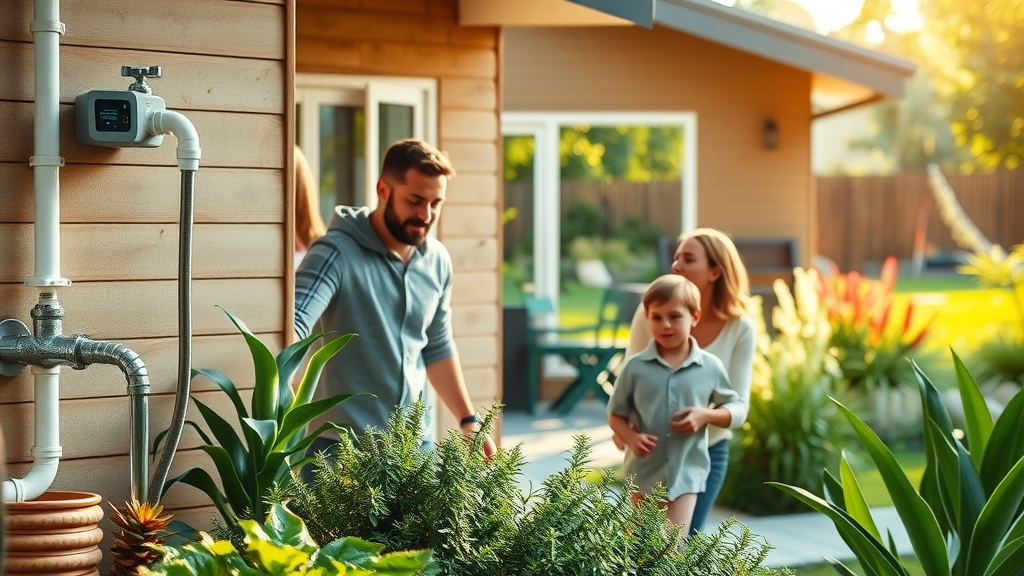
Start Saving Today: How Water-Saving Plumbing Fixtures Put Money Back in Your Pocket
Take action now—upgrading to certified water-saving plumbing fixtures ensures your home uses less water, lowers your bills, and supports a more sustainable future for everyone. Start with high-impact swaps like toilets, faucets, and showerheads, and watch your water and energy costs fall.
What You'll Learn
How to identify and select true water-saving plumbing fixtures
Which high-impact upgrades deliver the greatest water and cost savings
Key metrics for comparing flow rate, water efficiency, and gallons per flush
Innovations in water-saving technologies beyond the basics
Actionable steps to make your home more efficient and sustainable
Sources
Alliance for Water Efficiency – https://www.allianceforwaterefficiency.org/
U.S. Department of Energy – https://www.energy.gov/energysaver/save-water
Upgrading to water-saving plumbing fixtures is a practical step toward reducing water consumption and lowering utility bills. For comprehensive guidance on selecting the most efficient fixtures, consider the article “ How To Choose Water Saving Plumbing Fixtures ” from This Old House. This resource offers detailed insights into choosing water-efficient toilets, faucets, and showerheads, emphasizing the importance of WaterSense certification and technologies like dual-flush systems and faucet aerators. Additionally, the article “ Water-Saving Fixtures: An Updated Selection ” from GreenBuildingAdvisor provides an updated selection of low-flow bathroom faucets and other fixtures, highlighting products that meet WaterSense standards and offer significant water savings without compromising performance. If you’re serious about enhancing your home’s water efficiency, these resources will equip you with the knowledge to make informed decisions.
 Add Row
Add Row  Add
Add 

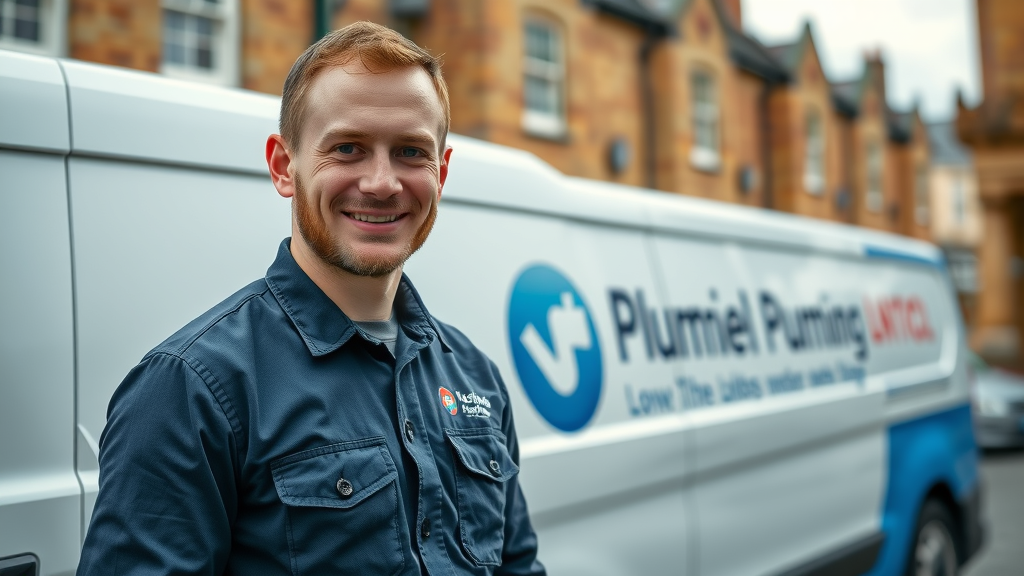
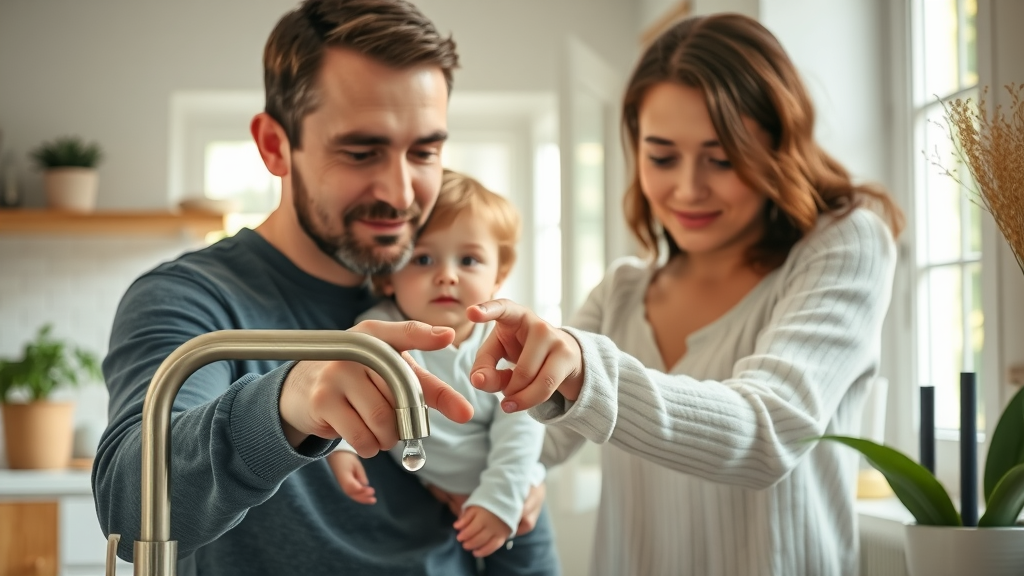


Write A Comment